A week with old friends at an Oregon resort later that year was a welcome break from meeting publication deadlines and coping with library patrons. Once, we all might have lived together in a commune, but instead had to plan ahead where and when to meet. The joy was that whenever we came together it was as if we'd never been apart. This, Sherrill and I felt, was true friendship.
Madrid, Segovia, Salamanca, Sevilla, Cordoba, Granada, Toledo: the names were a necklace of exotic jewels that we couldn't wait to fondle and during the trip we discovered several more gems. Visiting other countries, a friend once told me, is the best way to understand the diversity of the human spirit. Spain gave us many opportunities to broaden our appreciation of that diversity.
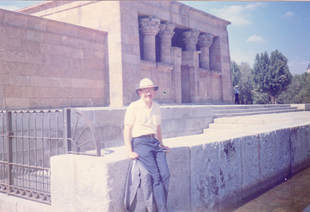 Bruce at Temple of Debod, Madrid
Bruce at Temple of Debod, Madrid * * *
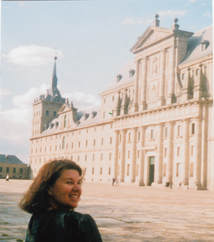 Sherrill at Philip II's Palace at Escorial
Sherrill at Philip II's Palace at Escorial Segovia, we learned, was known for, among other things, roast suckling pig, so after visiting the huge fairy tale-like castle, we stopped at a hillside restaurant from which we could view the towers and turrets while we ate. The portions, one with a trotter, the other with a hairy ear, were enormous—but delicious. (I still ate four-legged animals, then.) The waiter kept filling our wine glasses as we devoured the crunchy-skinned pig, then when we declared we couldn't eat another bite, he brought us each a digestif. The glasses were small, but he refilled them several times.
"You shouldn't get me drunk like that," Sherrill told me.
"Me?" I protested. "It wasn't me."
"Ha!"
We promised each other: no more roast suckling pig and no more digestifs. I do remember that we managed to visit the spectacular gardens of the eighteenth century palace of La Granja de San Ildefonso near Segovia. I photographed Sherrill looking overwhelmed by their beauty—or maybe it was lingering effect of the digestifs.
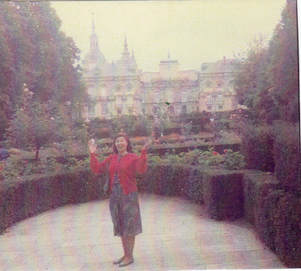 Sherrill at 18th century palace and gardens of La Granja de San Ildefonso near Segovia
Sherrill at 18th century palace and gardens of La Granja de San Ildefonso near Segovia To be continued....
You also might enjoy reading the new bargain-priced e-book of my first novel, The Night Action. It has been called the last great novel of an past era. "The novel careens around the night spots of San Francisco's North Beach and the words seem to fly off the page in the style of Tom Wolfe or the lyrics of Tom Waits." The book is available at Amazon and Barnes and Noble. Click on the title for the link.
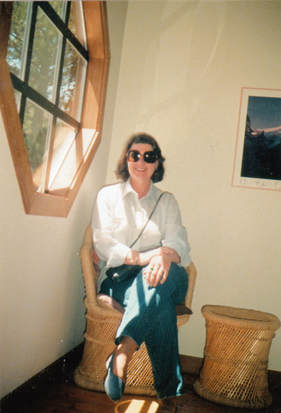
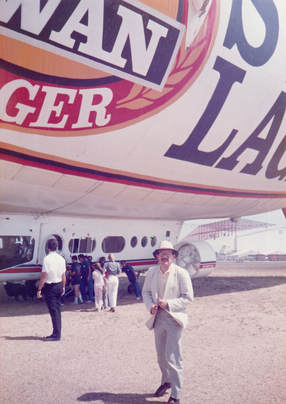
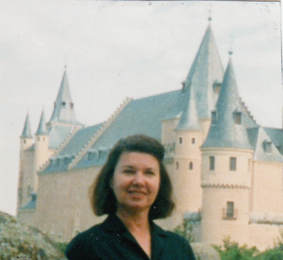
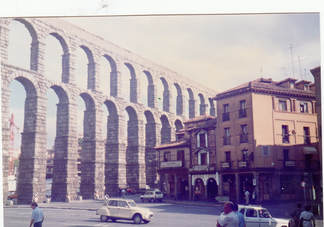
 RSS Feed
RSS Feed